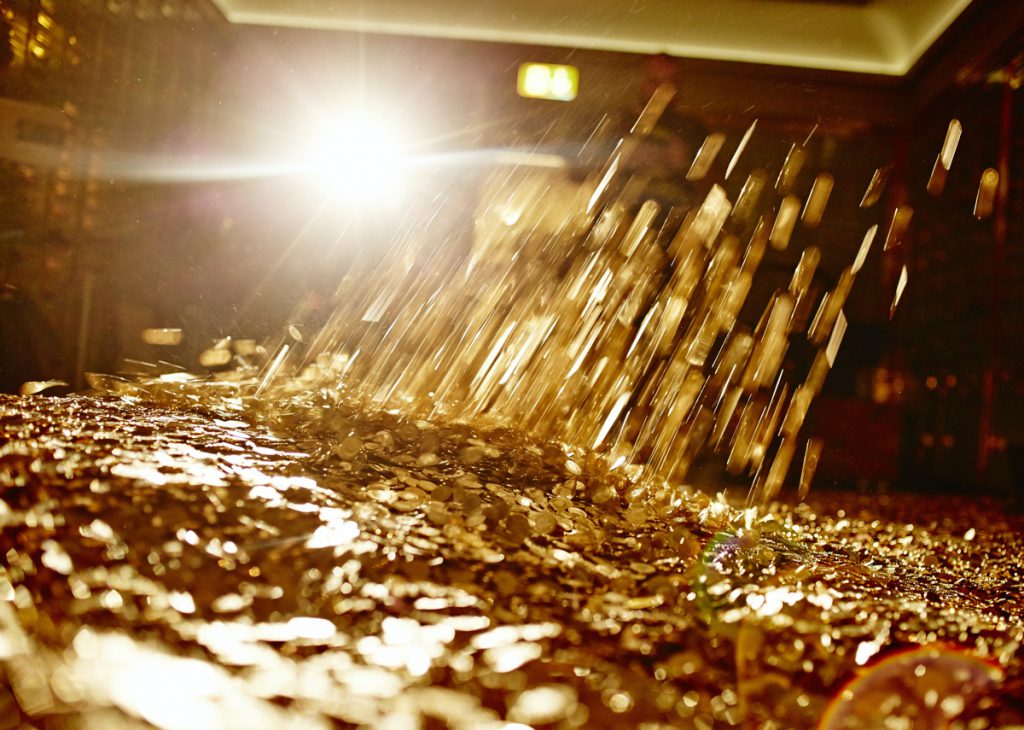Column: Gold price bulls hope short-term bank contagion sparks longer-term rally

The gold bulls are running again, hoping that a short-term boost from the collapse of Silicon Valley Bank can be translated into a longer-term rally for the precious metal.
The spot price of gold rallied strongly on Monday after US regulators enacted a series of emergency measures after the failure of Silicon Valley Bank and Signature Bank in New York.
Gold ended at $1,913.24 an ounce on Monday, having gained 4.5% since its close on March 9, and closing in on the high so far in 2023 of $1,959.60 on Feb. 2.
The rally was driven by investors buying into gold Exchange Traded Funds (ETFs), with the largest such vehicle, the SPDR Gold Trust reporting that its holdings rose 1.31% on Monday to 913.27 tonnes from 901.42 tonnes on March 10.
This is equivalent to 29.03 million ounces, but it’s worth noting that the SPDR holdings have been in a declining trend since April last year, when they peaked at 35.58 million ounces.
The broader question for the gold market is whether worries of a wider contagion in US financial markets will persist, or whether the actions of the Federal Reserve and the move by President Joe Biden to assuage fears will prevent the spread.
Even if the market is reassured that the problem is limited to the two collapsed banks, there may be implications that are positive for the price of gold.
Any suggestion that the Federal Reserve will pare back its current tightening of monetary policy is likely to be a longer-term positive for gold, especially if this occurs before the market is confident that high inflation is tamed.
So far it appears that gold is once again fulfilling its traditional role as a safe haven against volatility and risk, but it’s probably too early to say that the current buying will persist.
Nonetheless, the likely ramifications of the bank collapse are positive for gold, which was already being supported by other bullish factors.
China, India demand
Chief among those is the expectation that physical demand will rebound in China, traditionally the world’s largest consumer of the precious metal.
China’s economy is recovering from the now abandoned strict zero-covid policies that crimped growth last year, and there is likely some pent-up demand for gold jewellery, bars and coins that provides upside for demand.
China’s gold jewellery demand slumped 14%, or 101 tonnes, to 598.3 tonnes in 2022, according to data from the industry group the World Gold Council.
This meant China’s jewellery demand dropped below that of India, which saw a demand of 600.4 tonnes in 2022, a decline of 2% from the prior year.
This was the first time since 2011 that India’s jewellery demand exceeded that of China, indicating that there is plenty of upside should the expectations for a rebound in China’s economy come to fruition.
The outlook for India is also fairly upbeat as the country’s economy continues to perform strongly, with gross domestic product expected to rise 7% in the current 2022-23 fiscal year that ends on March 31.
China and India play an outsize role in the physical gold jewellery market, accounting for about two-thirds of the global total in 2022, with the next biggest country being the United States, which had jewellery demand of 143.7 tonnes last year.
Central bank buying is the wildcard for gold, having risen a strong 152% in 2022 to 1,135.7 tonnes.
Whether this trend continues is hard to predict, given that some of the biggest players in this space, such as China and Russia, provide little to zero public commentary on their intentions.
Overall, the risks for gold are skewed to the upside assuming that investors are drawn back to gold as a hedge against risk and inflation, China and India boost their physical demand, and central bank buying also holds up.
(The opinions expressed here are those of the author, Clyde Russell, a columnist for Reuters.)
(Editing by Sonali Paul)
{{ commodity.name }}
{{ post.title }}
{{ post.date }}

Comments